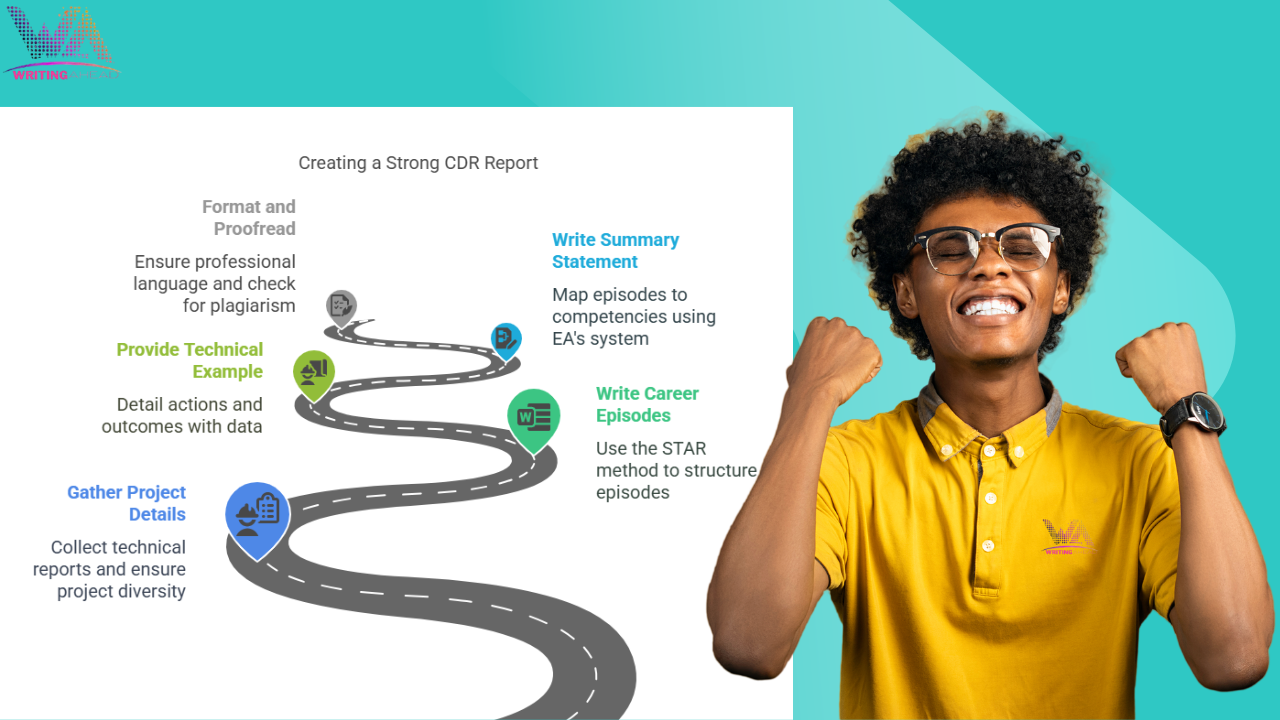
If a CDR Report is rejected by Engineers Australia (EA), it can be a significant setback for engineers wishing to migrate to Australia under skilled visas. Understanding the implications of a rejection and the steps you can take afterward is important. Here’s what happens and what you can do if your CDR gets rejected:
Reasons for CDR Rejection
- Non-compliance with Guidelines: Failing to follow the detailed instructions provided by Engineers Australia for the structure and content of the CDR.
- Insufficient Evidence of Competency: Not adequately demonstrating the required competencies through the Career Episodes and Summary Statement.
- Poor Documentation or Writing: Issues like poor grammar, unclear writing, or technical inaccuracies.
- Plagiarism: One of the most serious offenses that can lead to the immediate rejection of a CDR. Engineers Australia uses advanced plagiarism detection software to check all submissions.
Immediate Consequences
- Delay in Migration Plans: A rejection can delay your plans for migration, as you will need to address the issues in your CDR and resubmit, or wait until you are eligible to reapply.
- Loss of Application Fee: Typically, the application fee for a CDR assessment is non-refundable, meaning financial loss in addition to the delay.
Steps After Rejection
-
Seek Feedback: Engineers Australia usually provides detailed feedback on why a CDR was rejected. Review this feedback carefully to understand the specific areas of concern.
-
Address the Issues: Based on the feedback, make the necessary adjustments to your CDR. This might involve rewriting sections of your Career Episodes, adding more detailed evidence of your engineering skills, improving the documentation of your CPD, or enhancing the overall quality of the report.
-
Consider Professional Help: If you’re unsure how to address the issues in your CDR, consider seeking help from professional CDR writers who specialize in preparing documents according to Engineers Australia’s standards.
-
Reapply: Once you have revised your CDR, you can reapply for assessment. Make sure to double-check all guidelines and ensure your new submission addresses all previous feedback. Be aware that there may be a waiting period before you can reapply, depending on Engineers Australia’s policies.
-
Alternative Pathways: If reapplying for a CDR assessment doesn’t seem viable, consider other pathways to Australian migration or registration. This might include furthering your education, gaining more professional experience, or applying for different types of visas.
Preventative Measures
- Careful Preparation: To avoid rejection, ensure that your initial submission is meticulously prepared. Follow all guidelines, provide clear and comprehensive documentation, and avoid plagiarism completely.
- Peer Review: Before submitting your CDR, have it reviewed by peers or mentors in the engineering field. Feedback from others can help catch issues that you might have missed.
Conclusion
A CDR rejection can be disheartening, but it’s not the end of the road. With careful analysis and revision, many engineers successfully address the concerns raised by Engineers Australia and eventually achieve a positive assessment on reapplication. Being thorough in your preparation and proactive in seeking feedback can significantly enhance your chances of success.